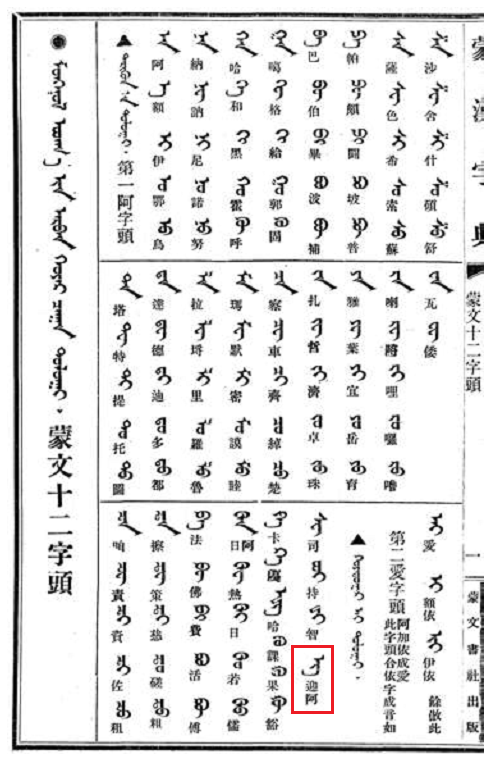- From: Andrew West <andrewcwest@gmail.com>
- Date: Wed, 6 Jan 2016 10:30:53 +0000
- To: Greg Eck <greck@postone.net>
- Cc: "public-i18n-mongolian@w3.org" <public-i18n-mongolian@w3.org>
- Message-ID: <CALgEMhww_iCuVCdRGtz2TPboThLhFMQJudq-JyJF3QCktQNbQA@mail.gmail.com>
Hi Greg, Thanks for the reply. For reference (and so it is in the email archive) I attach the page from the 1928 dictionary where the letter occurs (from *http://www.cneas.tohoku.ac.jp/ <http://www.cneas.tohoku.ac.jp/>*staff/hkuri/articles/a62houkoku14.pdf). Elsewhere in the dictionary the letter ang is written normally, just in this list of isolate letterforms is it written as shown. Andrew On 5 January 2016 at 23:56, Greg Eck <greck@postone.net> wrote: > Hi Andrew, > > > > I do not know of this form, myself. > > Is this possibly a head letter used in a dictionary? > > I can send in a note to Professor Quejingzhabu on it. > > Can anyone else comment on this form: > > Greg > > > > >>>>> > > Sent: Tuesday, January 5, 2016 10:34 PM > Subject: Unusual Isolated Form of Ang > > > > Are you or other experts on this list aware of the isolated form of ang > shown in the attached image? This comes from a list of Mongolian letters > in "mongγol nanggiyad üsüg-ün toli bičig" (蒙漢字典) published in 1928. This > is shown in context at > http://www.cneas.tohoku.ac.jp/staff/hkuri/articles/a62houkoku14.pdf > > page 9, notated as "迎阿". > > > > It looks like the final form of ang, but with an initial head. My > correspondent wants to know how to represent this isolate form in Unicode, > and I was unable to create this form using the Mongolian Baiti font, so I > am wondering whether it is covered by the new proposal, and if not, whether > perhaps a VS for this alternative isolated form should be defined. My > apologies if this has already been discussed on this list. > > > > Andrew > > >>>>> >
Attachments
- image/png attachment: image001.png

- image/png attachment: _____________1928.png

Received on Wednesday, 6 January 2016 10:31:43 UTC